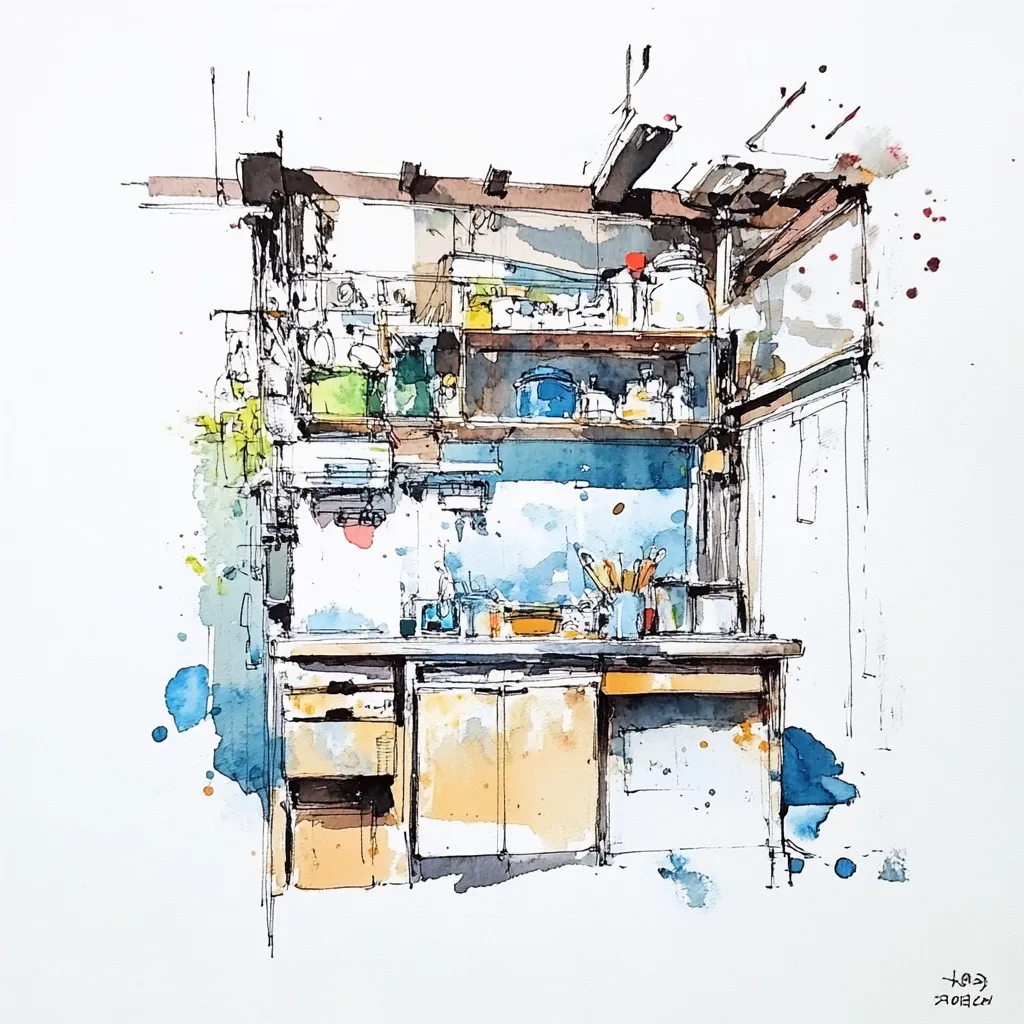Working Through Kitchen Organization

Table of Contents
We all know that over the years, we end up with plenty of kitchen stuff. Some of us hold on to pots and pans, get sweptup and buy another life changing kitchen appliance, get another set of tuperware and one day we have more coffee cups then days in the month. Here’s a little guide to declutter and organize for maximum efficiency and satisfaction.
Depending on the size of your kitchen it can be a daunting task. But for any big task, chunking it down into samll bite size task that fit into our busy schedules is a tried and true method.
Kitchen Towels Easy Win
Start with the towels. Kitchen towels accumulate quickly, often becoming stained, frayed, or musty. Sort through your collection and set aside any that are worn out or no longer absorbent. Keep only the best—aim for a set of 8-10 high-quality, multi-purpose towels for daily use. Consider donating lightly used ones to animal shelters or recycling them into cleaning rags. To organize, fold towels neatly and store them in a designated drawer or basket near the sink for easy access. Use dividers or small bins to separate dish towels from hand towels, ensuring a tidy, functional setup.
Tuperware Easy Win
Tuperware is a straight forward one. Go through your tuperware and get rid of any tuperware that is missing lids or has stains. If you have tuperware that is stained, you can try soaking it in a mixture of baking soda and vinegar to help remove the stains. Depending on you preference gettting rid of tuperware where you only have one or two of that type can be a good rule to follow.
Coffee Cups Easy Win
Coffee cups are another easy win. If you have a coffee cup that you don't use, get rid of it. Really take a moment and decide if that random coffee cup from some vacation ten years ago needs to stay taking up space in you kitchen.
Kitchen Appliances
That dusty waffle maker or rarely used bread machine might be taking up valuable counter or cabinet space. Be honest: if you haven’t used an appliance in the past year, it’s likely time to let it go. Check for functionality—broken or outdated appliances should be recycled responsibly through local e-waste programs. For keepers, store less frequently used items (like a slow cooker) in lower cabinets or on high shelves. Frequently used appliances, such as a toaster or coffee maker, can stay on the counter, but limit these to two or three to maintain a clean workspace. Group appliance cords with twist ties to prevent tangles.
Pots And Pans
When doing a kitchen cleanout, its a great time to evaluate the pros and cons of the different types of pots and pans out there.
- Stainless Steel: Durable and versatile, stainless steel cookware is a kitchen staple. It’s non-reactive, meaning it won’t alter the taste of your food, and it’s dishwasher safe. However, it can be prone to sticking if not properly preheated or oiled.
- Non-Stick: Non-stick pans are convenient for easy cooking and cleanup, but they can wear out over time. Look for PFOA-free options to avoid harmful chemicals. Avoid using metal utensils to prolong their lifespan.
- Copper: Copper cookware is excellent for heat conductivity, but it requires more maintenance. It can react with acidic foods, so look for lined options. Copper pans are often more expensive but can be worth the investment for serious cooks.
- Cast Iron: Cast iron pans are incredibly durable and can last a lifetime with proper care. They require seasoning to maintain their non-stick properties and should be hand washed to prevent rusting. Cast iron is great for high-heat cooking and can go from stovetop to oven.
- Ceramic: Ceramic cookware is non-reactive and often comes in vibrant colors. It’s generally dishwasher safe, but be cautious with high heat as it can chip or crack. Look for lead-free options to ensure safety.
Super Hack To Clean Tough Stains On Stainless Steel Pots And Pans
If you have a pot or pan that is discolored. This cleaning recipe will bring it back to like new.
- salt
- baking soda
- dish soap
- pour white vinegar
Organizing Pots And Pans
Depending on the size of your kitchen, pots and pans can be a challenge to organize. Here are some tips to help you get started.
- Pot Racks: If you have limited cabinet space, consider using a pot rack to hang pots and pans. This not only saves space but also adds a decorative touch to your kitchen.
- Stacking: Stack pots and pans by size, with the largest on the bottom and the smallest on top. Use pot protectors or cloths between them to prevent scratches.
Conclusion
Kitchen organization can be a daunting task, but with a little planning and effort, it can be done.
When the clean out is done, reach out to Haul and Go and we'll makes sure the junks is donated, recycled or disposed of properly.